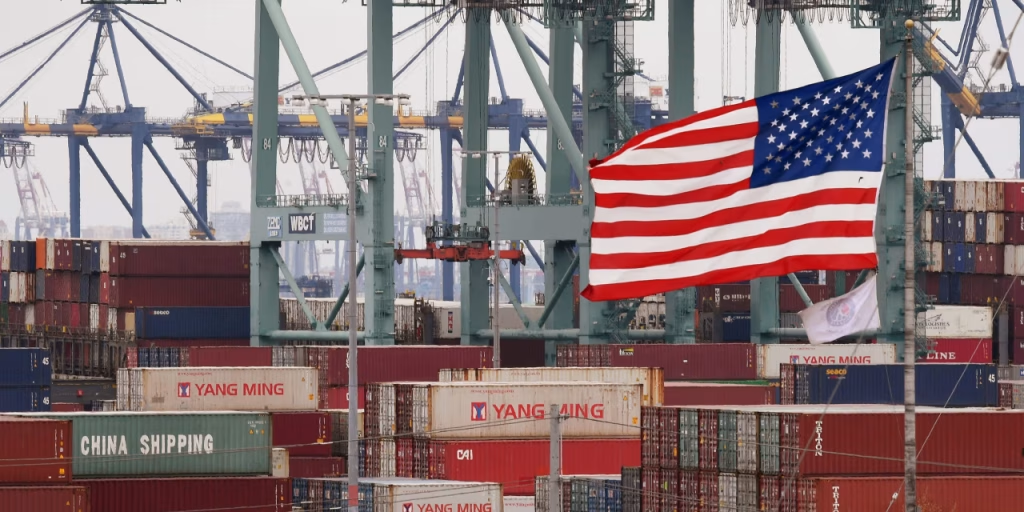The U.S.-China trade dispute is heating up once more, with Beijing telling Washington to “stop threatening and blackmailing” after President Donald Trump reiterated that it’s up to China to return to the negotiating table.
At the heart of the renewed tension is Trump’s aggressive new round of tariffs—some reaching as high as 145% on Chinese imports—which Beijing has countered with its own retaliatory duties of 125% on American goods.
In a press briefing on Wednesday, Chinese Foreign Ministry spokesman Lin Jian pushed back strongly against Washington’s approach.

“If the U.S. truly wants to resolve this issue through dialogue and negotiation, it must stop exerting extreme pressure and come to the table based on equality, mutual respect, and shared benefit,” Lin said.
“China does not want to fight, but it is not afraid to fight.”
READ ALSO: Panama City Approves Crypto Payments for Public Services
This latest escalation follows months of growing trade tension. Earlier this year, Trump imposed a 20% tariff on Chinese goods, citing Beijing’s alleged involvement in the global fentanyl supply chain.
That move was soon followed by a massive 125% tariff targeting what the White House called “unfair trade practices.” These have now snowballed into a new tariff hike—up to 145%—on a broad range of Chinese imports.

While Trump has spared some tech products like smartphones and laptops from the latest levies, the broader effect of the tariffs is expected to be far-reaching. In a statement read by Press Secretary Karoline Leavitt, the Trump administration made it clear that the onus was on China to make the next move.
“The ball is in China’s court. China needs to make a deal with us. We don’t have to make a deal with them,” said Trump.
Economists have been warning that this kind of brinkmanship could have ripple effects across global markets, even risking a recession if tensions continue to escalate.

In spite of the uncertainty, China reported a surprisingly strong 5.4% economic growth in the first quarter of the year. Analysts believe that exporters rushed to push goods out the door ahead of U.S. tariff deadlines, temporarily boosting output.
READ ALSO: Dangote Refinery Slashes Petrol Price to ₦835 Per Litre
However, that momentum might not last. According to Heron Lim of Moody’s Analytics, the effects of April’s tariff hikes will likely show up in the next quarter’s data. U.S. companies are expected to begin looking elsewhere for suppliers, which could hurt Chinese exports and chill investor confidence.
In Japan, envoy Ryosei Akazawa was in Washington on Wednesday to meet with U.S. Treasury Secretary Scott Bessent. He expressed optimism about finding a “win-win” outcome but emphasized Japan’s commitment to protecting its national interests.

Meanwhile, Japanese automaker Honda announced it will shift production of its hybrid Civic from Japan to the United States—a move the company says aligns with its long-standing strategy to “produce cars where the demand is,” rather than a direct response to tariffs.
READ ALSO: PwC Shuts Down Offices in Nine African Countries Amid Strategic Overhaul
South Korea is also feeling the squeeze. Finance Minister Choi Sang-mok is set to meet with Bessent next week, aiming to delay reciprocal tariffs and reduce the uncertainty facing Korean firms operating in global markets. The stakes are especially high for South Korea’s semiconductor and automobile industries.
Technology stocks across Asia took a hit this week following news that Nvidia expects a $5.5 billion revenue loss due to new U.S. licensing rules that restrict sales of its most advanced chips to China.

The move is part of a broader effort by the Trump administration to limit China’s access to key technologies, including semiconductors and rare earth materials.
Adding fuel to the fire, Trump also ordered a fresh investigation that could result in new tariffs on critical minerals, rare-earth metals, and consumer tech products like smartphones—a move that signals this trade war may still have room to escalate.
The rhetoric from both sides signals a deepening divide that’s not just about trade—it’s about global influence, technological supremacy, and strategic control. With global supply chains still fragile post-pandemic and geopolitical alliances shifting, the path forward is anything but clear.
Discover more from Scoop Hub
Subscribe to get the latest posts sent to your email.

